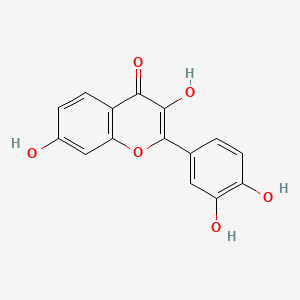
|
Fisetin |
Fisetin is a lipid of Polyketides (PK) class. Fisetin is associated with abnormalities such as Morphologically altered structure, PARKINSON DISEASE, LATE-ONSET, Tetanus, CNS disorder and Disintegration (morphologic abnormality). The involved functions are known as Autophagy, Apoptosis, Energy Metabolism, Acceleration and Anabolism. Fisetin often locates in Mitochondria, Cytoplasmic matrix, Extracellular, Cytoskeletal Filaments and Autophagic vacuole. The associated genes with Fisetin are SIRT1 gene, MAP1LC3A gene, TP53 gene, P4HTM gene and AURKB gene. The related lipids are Phosphatidylserines and Lipopolysaccharides. The related experimental models are Animal Cancer Model, Xenograft Model, Mouse Model, Cancer Model and Disease model. |
832 |
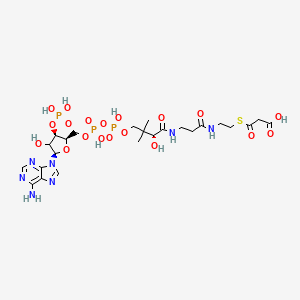
|
Lmfa07050031 |
Lmfa07050031 is a lipid of Fatty Acyls (FA) class. The involved functions are known as Pigment and Polymerization. The related lipids are Propionate. |
787 |
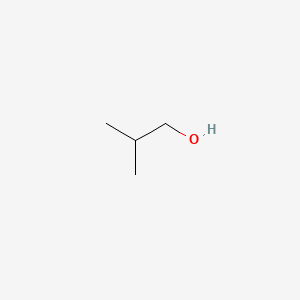
|
2-methyl-1-propanol |
2-methyl-1-propanol is a lipid of Fatty Acyls (FA) class. 2-methyl-1-propanol is associated with abnormalities such as FRIEDREICH ATAXIA 1, Amelia, Tuberculosis, purging and Tuberculosis, Pulmonary. The involved functions are known as Regulation, Oxidation-Reduction, Fermentation, Biochemical Pathway and Glycolysis. 2-methyl-1-propanol often locates in Protoplasm, Chromosomes, Human, Pair 7, BL21, Chromosomes and Cell metabolite. The associated genes with 2-methyl-1-propanol are ADH1B gene, LDHA gene, Operon, AAAS gene and SLC7A3 gene. The related lipids are Butanols, Fatty Alcohols, 1-Butanol, Fatty Acids and cyclopropane fatty acids. The related experimental models are Knock-out. |
758 |
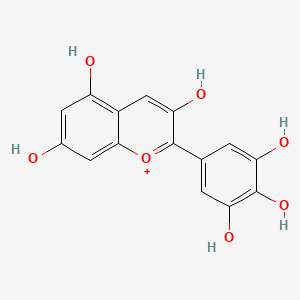
|
Delphinidin |
Delphinidin is a lipid of Polyketides (PK) class. Delphinidin is associated with abnormalities such as Virus Diseases, Chronic disease, Inflammatory disorder, Degenerative polyarthritis and Cardiovascular Diseases. The involved functions are known as Signal Pathways, Metabolic Inhibition, Signal Transduction, Cell Proliferation and Cell Death. Delphinidin often locates in Tissue membrane, Tubulo-reticular structure, Smooth muscle (tissue), Endothelium and soluble. The associated genes with Delphinidin are KDR gene, P4HTM gene, IRAK1 gene, MAPK14 wt Allele and ADAMTS3 gene. The related lipids are Steroids, Total cholesterol and saikosaponin B2. The related experimental models are Xenograft Model, Knock-out, Disease model and Animal Disease Models. |
727 |
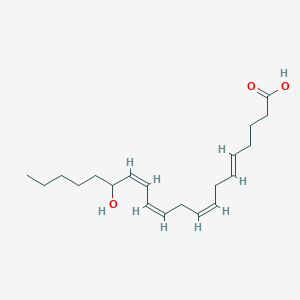
|
15-hete |
15-hete is a lipid of Fatty Acyls (FA) class. The involved functions are known as Inflammation, Signal Transduction, inhibitors, Obstruction and Adjudication. 15-hete often locates in Endothelium, Protoplasm, Cytoplasm, Cytoplasmic and Extracellular. |
725 |
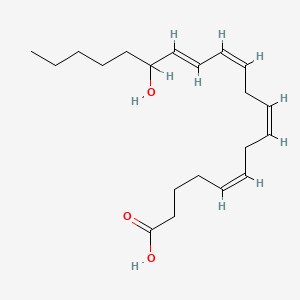
|
15-hete |
15-hete is a lipid of Fatty Acyls (FA) class. 15-hete is associated with abnormalities such as Endothelial dysfunction, Atherosclerosis, Risk factor, cardiovascular, hypercholesterolemia and Diabetes. The involved functions are known as uptake, Inflammation, Phosphorylation, Oxidation and Atherogenesis. 15-hete often locates in Endothelium, Cell surface, Protoplasm, Body tissue and Blood. The associated genes with 15-hete are CD36 gene, CCL2 gene, Orthologous Gene, SMAD2 gene and SMAD3 gene. The related lipids are 9-hydroxy-10,12-octadecadienoic acid and hydroxy fatty acid. |
725 |

|
PE(15:0/20:0) |
PE(15:0/20:0) is a lipid of Glycerophospholipids (GP) class. Pe(15:0/20:0) is associated with abnormalities such as Exanthema, Infection, Painful Bladder Syndrome, Obesity and Fatty Liver. The involved functions are known as conjugation, Transcription, Genetic, Sinking, Autophagy and Protein Biosynthesis. Pe(15:0/20:0) often locates in membrane fraction, soluble, Membrane, Body tissue and Tissue membrane. The associated genes with PE(15:0/20:0) are GABARAPL2 gene, ATG10 gene, ATG12 gene, SLC33A1 gene and GABARAP gene. The related lipids are Liposomes, Lipopolysaccharides, Phosphatidylserines, Membrane Lipids and Cardiolipins. The related experimental models are Knock-out and Cancer Model. |
723 |
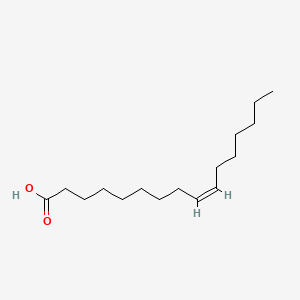
|
cis-9-palmitoleic acid |
Cis-9-palmitoleic acid is a lipid of Fatty Acyls (FA) class. |
694 |
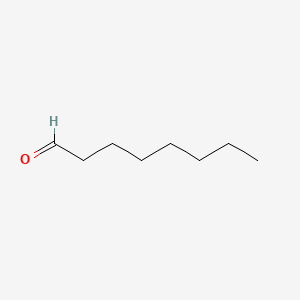
|
Caprylaldehyde |
Caprylaldehyde is a lipid of Fatty Acyls (FA) class. |
677 |
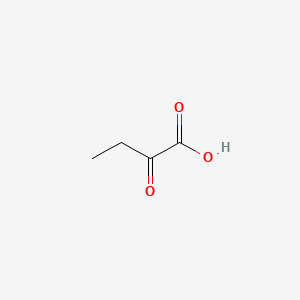
|
3-methyl pyruvic acid |
3-methyl pyruvic acid is a lipid of Fatty Acyls (FA) class. |
623 |
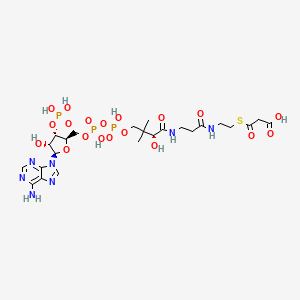
|
Malonyl-coa |
|
492 |
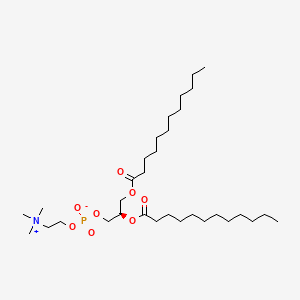
|
18194-25-7 |
18194-25-7 is a lipid of Glycerophospholipids (GP) class. 18194-25-7 is associated with abnormalities such as gaucher's and Disorder, fluids. The involved functions are known as Force, Stereochemistry, Pressure- physical agent, van der Waals Attraction and Complication. 18194-25-7 often locates in Membrane, Tissue membrane, Head, Plasma membrane and Lipid Bilayers. The associated genes with 18194-25-7 are BHLHE41 gene. The related lipids are Liposomes, dilauroyl lecithin, lipid structure, 1,2-oleoylphosphatidylcholine and Unilamellar Vesicles. |
445 |
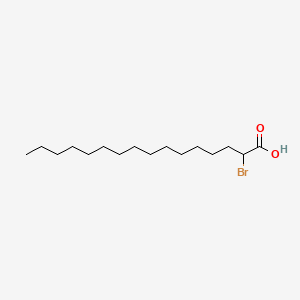
|
2-bromohexadecanoic acid |
2-bromohexadecanoic acid is a lipid of Fatty Acyls (FA) class. 2-bromohexadecanoic acid is associated with abnormalities such as Varicosity and Coronavirus Infections. The involved functions are known as Cell Proliferation, Apoptosis, Binding (Molecular Function), Regulation and Biochemical Pathway. 2-bromohexadecanoic acid often locates in Membrane, Cytoplasm, Mitochondria, Cell surface and Extracellular. The associated genes with 2-bromohexadecanoic acid are SLC33A1 gene, GRK6 gene, RBP1 gene, DST gene and FATE1 gene. The related lipids are Palmitates, Fatty Acids, Nonesterified Fatty Acids, Fatty Acids, Unsaturated and Oleates. |
425 |
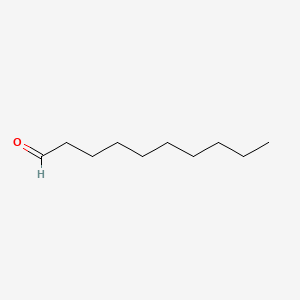
|
Capraldehyde |
Capraldehyde is a lipid of Fatty Acyls (FA) class. |
422 |
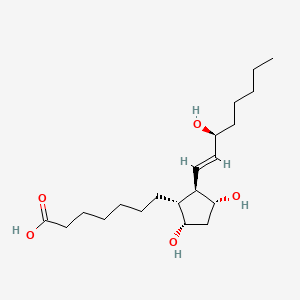
|
PGF1alpha |
Pgf1alpha is a lipid of Fatty Acyls (FA) class. |
418 |
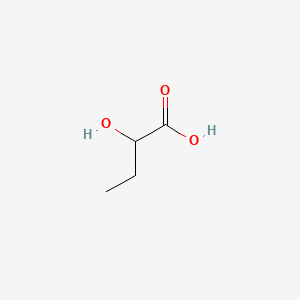
|
(+/-)alpha-hydoxy butyric acid |
(+/-)alpha-hydoxy butyric acid is a lipid of Fatty Acyls (FA) class. |
390 |
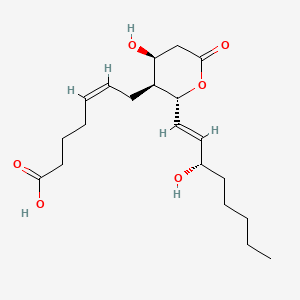
|
11-dehydro-TXB2 |
11-dehydro-txb2 is a lipid of Fatty Acyls (FA) class. 11-dehydro-txb2 is associated with abnormalities such as endothelial dysfunction, Risk factor, cardiovascular, Acute coronary syndrome, thrombocytosis and Chronic ischemic heart disease NOS. The involved functions are known as Platelet Activation, Excretory function, Anabolism, Inflammation and Lipid Peroxidation. The associated genes with 11-dehydro-TXB2 are PTGS2 gene. |
381 |
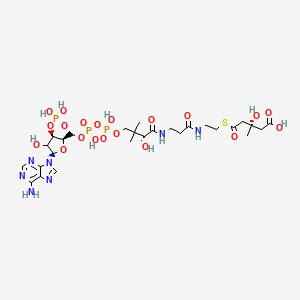
|
HMG-CoA |
Hmg-coa is a lipid of Fatty Acyls (FA) class. Hmg-coa is associated with abnormalities such as Cardiovascular Diseases, Hypercholesterolemia, Metabolic Diseases, Hyperhomocysteinemia and Morphologically altered structure. The involved functions are known as ketone body biosynthetic process, Regulation, Mutation, enzyme activity and HMG-CoA synthase activity. Hmg-coa often locates in Mitochondria, Cytoplasmic matrix, Hepatic, Membrane and Flank (surface region). The associated genes with HMG-CoA are Human gene, HMGCS2 gene, PPARA gene, ACSL1 Gene and Candidate Disease Gene. The related lipids are Fatty Acids, Sterols, Dehydrocholesterols, Lipopolysaccharides and 7-dehydrocholesterol. |
355 |

|
Tangeretin |
Tangeretin is a lipid of Polyketides (PK) class. Tangeretin is associated with abnormalities such as Cardiovascular Diseases, Complex Regional Pain Syndromes, Blood Clot, Hypercholesterolemia and Restenosis. The involved functions are known as Thrombus, Platelet function, Localized desquamation, Platelet Activation and Signal. Tangeretin often locates in Protoplasm, Cytoplasmic Granules, Cytoplasmic matrix, Plasma membrane and Blood. The associated genes with Tangeretin are GP6 gene, CDK2 gene, CDK6 gene, Tumor Suppressor Genes and CDH1 gene. The related lipids are Lipopolysaccharides. The related experimental models are Mouse Model and Transgenic Model. |
325 |
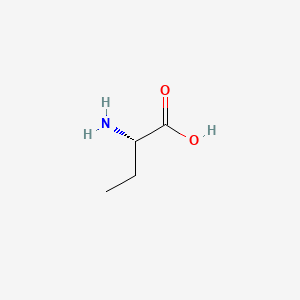
|
L-2-aminobutyric acid |
L-2-aminobutyric acid is a lipid of Fatty Acyls (FA) class. The involved functions are known as Analyte, Noise and drug catabolism. The associated genes with L-2-aminobutyric acid are butyrine. |
281 |



















